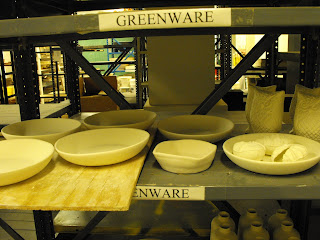






Growing Up -Amber R. Novack
In a tree that is central to the campus for art students, where it is surrounded by two art buildings and the library, is a series of insects and cocoons or chrysalises. These caterpillars are pre-cocoon, some cocoons are sealed, still going through the transformation and some have already torn through and left, transformed. We all go through a transformation from childhood to adulthood in life; some slowly and some much more quickly than others. Some of us leave parts of our childhood behind when we grow up, and some of us take much of it with us. Some of us also have items that we may see long after growing up that bring us back to a time of childhood. These insects have done this in a place where all ages of college students pass, both the young new freshmen and the experienced master's students. Trees represent life in various cultures, as this tree holds children at different stages of transformation.
Food for Thought -Amber R. Novack
Around the world, societies have different staples for food in their basic diets. The norm for American society as a whole in fast food chains is hamburgers, or beef, derived from cows. Many people would not blink at this food source, but in India, cows are sacred, and to even think of eating such a thing is horrific. Insects are also a staple food in many societies in Africa, Asia, Middle and South America. To even think of eating bugs in Western European and American societies is unthinkable. Why do some foods transcend culture, but others do not? What associations are given to certain creatures that humans obtain nourishment from? Depending on the background of the viewer, the associations of one animal for food and an insect for food may be very different, or actually the same.
Untitled (Gaelic and American Idiom Bowls) -Amber R. Novack
There are phrases used everyday by people of various cultures to describe different situations in not so many words, which we call idioms. Growing up with Irish culture being a big part of my background, I recognize many Irish and American idioms. People who are not a part of a certain cultures would not recognize or relate to certain phrases, while others who are a part of that culture will. Included are three phrases I heard growing up both from Irish culture in Gaelic and from American culture in English, brought together on bowls.
(Photos to follow critiques on pieces so they may be photographed in their intended display setting.)


 I'm happy to say that none of my cocoons or caterpillars blew up! They have all been bisque fired, and are now ready to be glazed. I just hope that there are enough stilts for me to use, because I want to dip these guys in glaze.
I'm happy to say that none of my cocoons or caterpillars blew up! They have all been bisque fired, and are now ready to be glazed. I just hope that there are enough stilts for me to use, because I want to dip these guys in glaze. Slip cast bowls and a couple bugs ready to be bisque fired. Those are Judi's awesome owls on the right!
Slip cast bowls and a couple bugs ready to be bisque fired. Those are Judi's awesome owls on the right! Project 3: thrown on the wheel. I made a series of variously sized bowls which each have a saying on them from either American culture in English or Irish culture in Gaelic. Goin' back to my roots. :)
Project 3: thrown on the wheel. I made a series of variously sized bowls which each have a saying on them from either American culture in English or Irish culture in Gaelic. Goin' back to my roots. :) There's some more thrown bowls.
There's some more thrown bowls.
In response to today’s articles and discussions, I found the idea of margins in relation to our courses here at New Paltz an interesting idea. Especially to this course, we have margins or slight guidelines in ceramics to provide a jumping point for work, but at the same time each assignment is outlined in a vague way to help provide slight margins so that each assignment isn’t too vague. Personally, I feel the need for freedom for exploration in my own work as a graduate student, but at the same time I can appreciate a challenge or problem to address in each assignment so that it isn’t too vague for me to come up with a concept to explore on the fly.
On another note, I really enjoyed John Byrd’s piece “Simple Anatomy, Slow Burn”. It was really interesting, and I really appreciate work that shows mastery of a skill or medium but at the same time is able to combine other mediums or materials to create a cohesive piece. I especially enjoyed the connection to nature Byrd presents in this piece, as I enjoy having a connection to or reference to nature in many of my own work.
Also, in reference to the altermodernism article; I really enjoy the thought and concept of a ‘nomadic artist’. Being myself one who uses a variety of mediums for each of my works, I don’t really feel comfortable saying I am just an illustrator, sculptor, etc. I feel that I could really embrace the notion of being a nomadic artist. Having never heard that term before, I think I would like to learn more about this term and notion.